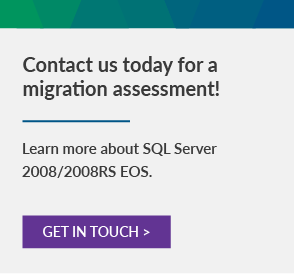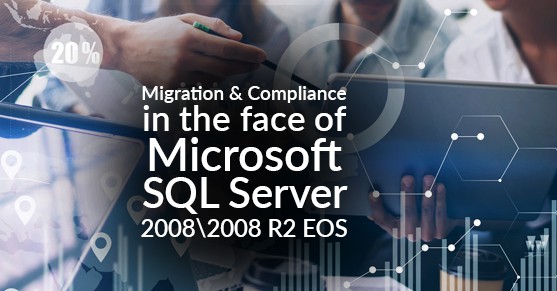The end is near for Microsoft’s servicing of SQL Server 20082008 R2; by July 9, 2019 Microsoft will have ended all support for 20082008 R2. It may seem unsettling, but there’s a lot you can do to prepare for the end of service (and increase your database functions and performance at the same time).
With the end of service less than four months away, migrating to the 2016 or more recent versions will be the best course of action. It isn’t just the end of extended support for SQL Server 20082008 R2, but also the end of mainstream support for SQL Server 2014, and by July 11 we’ll be two years into the five year extended support for SQL Server 2012. With the end of mainstream service still a few years out for version of SQL Server 2016 and later, migrating to one of these platforms now will offer support for the next seven to eight years.

SQL Server 2016 and 2017 also have a lot of other features besides their timestamp that promotes migrating to them. SQL Server 2016 was enhanced with a variety of features including Always Encrypted, Dynamic Data Masking, Stretch Database, and other capabilities not found in previous versions. The release of SQL Server 2017 was well-received not only because it can now operate on Linux, but also because of it’s Dynamic Management Options (DMOs), wait stats in Query Store, and the Database Graph.
Another reason to switch to versions 2016 or 2017 is that the end of service may render your database non-compliant with regulatory standards. The safety of your information and privacy of your data is vital, and the end of service could potentially put you at risk of losing some of that security. Some of those standards your database may no longer meet include:
- PCI-DSS: credit card transactions
- HIPAA: medical patient privacy
- GLBA: financial institutions
- GDPR: companies who do business in the EU
Fortunately, newer versions of SQL Server offer support in most areas of security compliance. With capabilities to identify, locate, and manage personal data, initiate responses to data breaches, and produce reports for action data subjects requests and documentation. With an interface that’s as easy to set up as it is to use, remaining compliant with more current versions of SQL Server is a breeze.
Migrating your entire database might seem like a lot, but the pros far outweigh the cons in light of SQL Server 20082008 R2 end of service. From increasing and enhancing numerous features (for exact details on new features, read our blog, “What’s New in SQL Server 2017“) to ease of regulation and compliance, SQL Server 2016 and later will ultimately provide your business with a safe and efficient database platform.
Over the next few weeks, be sure to follow our blog page for more information on the end of service. We’ll be posting about other related topics including more details on security on compliance, the path of SQL Server, what 2017 can offer users, the future of SQL Server (on-prem, cloud, and hybrid options), and SQL Server on AzureSQL/Azure VM.

